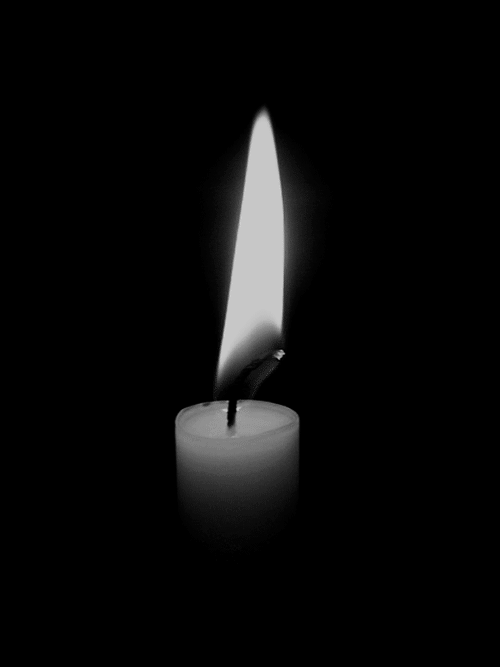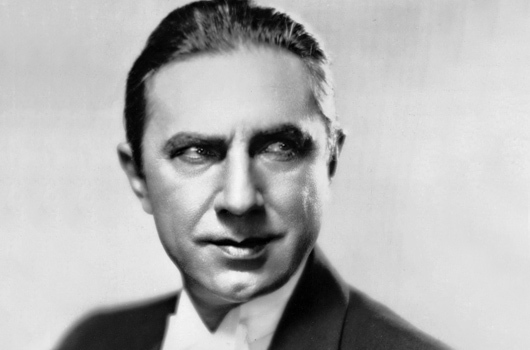
by Paul Batters
‘To die, to be really dead…that must be glorious’ Bela Lugosi Dracula (1931)
Halloween is upon us! And without a doubt, film fans are finalising their viewing lists for the evening. I’m always interested in the carefully chosen lists of film buffs – lists that often stay thematic (or within a sub-genre) or offer a smorgasbord of horror delights or are even look quite eclectic.
For fans of classic film, the horror genre is rich with great films to enjoy, particularly during Halloween. And of course there are countless B-features and horror schlock quickies that are guilty pleasures, as well as the great classic films that broke ground and established two of horror’s greatest stars in the early 1930s – Boris Karloff and Bela Lugosi.
Of these two, Karloff’s career was perhaps the more successful and long lasting. While typecast in the horror genre, Karloff was able to eventually embrace it. Lugosi was not so fortunate and perhaps did not manage his career as well as Karloff did. Despite starring in some successful film, Lugosi would sadly find a career relegated to Poverty Row films, which would dwindle in his final years to films remembered for the wrong reasons.
Despite Lugosi’s less than glamorous final years, he is immortal amongst classic horror film fans. Yes there may have been some clunkers in which he starred but Lugosi alone often pulled the film out of the doldrums simply due to his presence.
So when considering your Halloween viewing lists, consider the following performances, which I feel are his best.
Just for the record, the aim here is not to critique the films per se but Lugosi’s performances. Even a bad film can have an interesting and/or fantastic performance.
White Zombie was an independent production by the Halperin brothers, which was not kindly received by critics at the time. Despite harsh criticism of the film’s ‘woeful acting’, most critics were positive about Lugosi’s performance and it is still the best thing about White Zombie. Since its’ initial release, it has seen in a different light and revived to some degree. At best, White Zombie is interesting with its’ creepy atmosphere and strange storyline. If it has any life in it, it’s due to the Bela Lugosi’s commanding charisma.
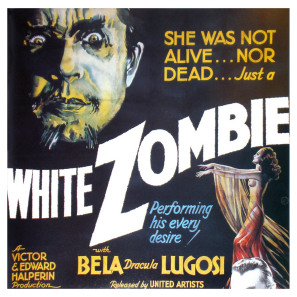
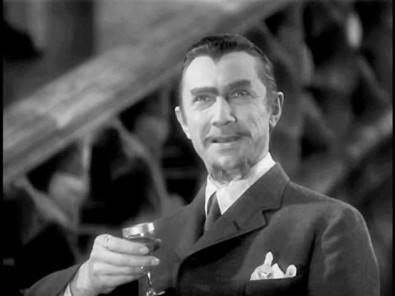
Looking Satanic in his goatee, with wild eyes and imposing stature, Lugosi plays the master of his domain to the hilt. The camera attempts to exploit Lugosi’s hand gestures, emphasising the use of his power over others with close-ups. Lugosi’s voice is also commanding, delivering with intimidation as his eyes burn into those upon whom he fixes his gaze. Sean Axmaker in his Jan. 2013 review of the Kino Blu-ray release of White Zombie for Parallax View makes the following observation of Lugosi:
‘…a languorous hypnotist and voodoo master who dominates the film with his assured bearing and cruel control. Not just menacing, he is ferociously vindictive, supplying the local mills with an army of zombie laborers and turning his enemies into his personal zombie servants…’
The fact that Kino has gone to the trouble of releasing a Blu-ray version of White Zombie is testament to its’ lasting success as a cult film and the fact that it still stands as one of Lugosi’s best performances.
Directed by Lew Landers and released by Columbia Pictures, The Return Of The Vampire was made during a period where Columbia dabbled in a number of supernatural/horror releases. Most critics make it clear that Lugosi is obviously playing Dracula but for legal reasons (namely Universal owning the rights) the character was re-named Armand Tesla.
The Return Of The Vampire feels stranded between an A and B-feature and it is the last time Lugosi would work in such a quality picture for a major studio, not counting his last turn as Dracula for Universal in 1948’s comedy/horror Abbott And Costello Meet Frankenstein. The plot, set in London, tells of Lady Jane Ainsley (Frieda Inescort), who is being pursued by a vampire named Armand Tesla (Bela Lugosi). After wreaking havoc on her household, he is eventually pursued and a stake driven into his heart by Lady Jane and Professor Walter Saunders (Gilbert Emery). However, during World War Two, the cemetery is disturbed by air raids and gravediggers who have been ordered to re-bury the disturbed bodies find Tesla’s body and remove the stake. Tesla is revived and aided by his werewolf servant Andreas (Matt Willis), seeks out Lady Jane and the daughter of Saunders, Nikki (Nina Foch).
Despite a fairly run of the mill vampire story and, I feel, some unfair criticism, the film has some effective scenes and fairly solid production value. True, Tesla is no Dracula but Lugosi is forever the effective vampire and convincing in the role. Lugosi presents a vampire hell-bent on survival, impatient and raw in emotion, unlike the smooth, measured count of his greatest role. Better dialogue is found wanting but Lugosi makes the most with what he has and gives a strong performance.
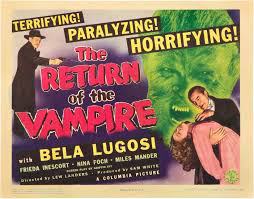
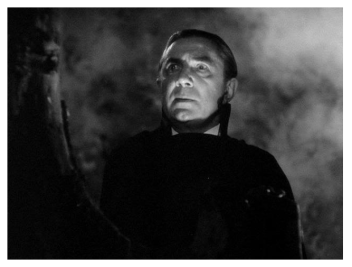
Lugosi had always hoped for a follow-up to Dracula. There was disappointment for him with Dracula’s Daughter (1936) and though he played his famous role in Abbott And Costello Meet Frankenstein (1948), Lugosi’s best days were behind him. The Return Of The Vampire was the closest he was ever going to get to a follow-up.
The final scene showing Tesla’s final demise exhibits some gruesome horror, befitting the last starring role, which Lugosi would hold for a top line studio.
When Karloff and Lugosi became stars in the early 1930s, it made sense that Universal would cash in on their success and bring the two stars together. In total, Karloff and Lugosi would work together in seven films. However, the first film they made stands as their best. Both would later add that the film stands as a personal favourite for each man.
The Black Cat (1934) is a masterpiece of the macabre. As a piece of dark poetry, it delves into the realm of perversion far more than the cornerstones of the Universal horror cycle ever did. It descends down a long staircase into the bowels of the bizarre, further darkened by themes which would not be tampered with again for many years in cinema, such as Satanism, torture, human sacrifice and necrophilia (just to name a few).
True, the film has some plot holes an ocean liner could sail through and many critics have stated how little the film resembles Edgar Allen Poe’s original story, despite the advertising using Poe’s name in promotions. But don’t let that distract you. The incredible art deco set alone is an attention-grabber and director Edgar G Ulmer creates an eerie and trance-like atmosphere, in which the young honeymooning couple Peter (David Manners) and Joan Alison (Julie Bishop) find themselves entangled. But they become a plot device for the duel between archenemies Hjalmar Poelzig (Boris Karloff) and Dr. Vitus Werdegast (Bela Lugosi), meeting again after 15 years.
Werdegast (Lugosi) is ostensibly the hero of the film, returning to seek revenge on the diabolical Poelzig (Karloff) for his terrible crimes of the past. What follows becomes a game of chess where the two pit their wits against each other, with a horrific climax to the duel that still shocks today.
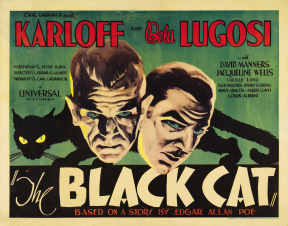
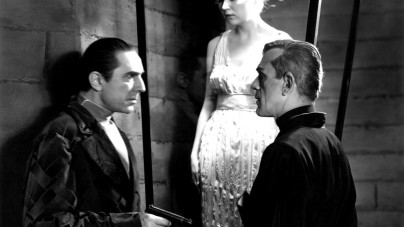
Lugosi is commanding, showing the perfect balance between restraint and zeal as the revenge-seeking doctor. His channelling of Wedegast’s inner torment is well balanced by his ability to gain our sympathy, whilst his rage bubbles underneath. His first moments in the film are impressive, as Lugosi carries himself with class and charm as he meets the young couple. Early in the film, Wedegast says little in terms of his experiences as a former P.O.W but the weighting that Lugosi carefully places on each word combined with his anguished eyes is enough for the audience to understand what horrors he has survived. Not long afterwards, as the young couple and Wedegast travel on the bus from the station, the driver tells the story of the place they are heading to:
‘All of this country was one of the greatest battlefields of the war. Tens of thousands of men died here. The ravine down there was piled twelve deep with dead and wounded men. The little river below was swollen red, a raging torrent of blood. And that high hill yonder where Engineer Poelzig now lives, was the site of Fort Marmorus. He built his home on its very foundations. Marmorus, the greatest graveyard in the world!’
As the driver tells his story, Wedegast re-lives the horror of war and the personal tragedies faced, which Lugosi expresses by simply closing his eyes. Wedegast is a man who has suffered terribly and Lugosi brilliantly conveys that anguish, particularly in the final scenes of the film, where his rage bursts through and the time for masks is over. His glee is unconfined and Lugosi holds nothing back. Whilst there are moments that are disturbing, such as his caressing of Jane as she sleeps and of course the film’s climax, the audience cannot help but feel for Wedegast and the horrors he has endured.
Lugosi’s performance was in need of some tempering by Ulmer. Indeed, the moments when Lugosi encounters the black cat are hammy. According to Bret Wood in his review on TCM:
Ulmer cleverly moderated Lugosi’s performance by limiting his screen time, focusing more on reaction shots of other characters. “You had to cut away from Lugosi continuously,” Ulmer said, “to cut him down.”
I would add that if that is the case, it speaks more for Lugosi who gave Ulmer plenty to work with.
Son Of Frankenstein (1939) was the last time Karloff would take on the role of the Monster and whilst an interesting and still entertaining film, it does not have the quality of the prior two and pales in comparison to James Whale’s 1935 classic The Bride Of Frankenstein. Whilst there is no doubt of its’ A-film status, there are hints of the B-films to come in the early 1940s, particularly evident in moments which show the Monster as a mindless brute following Ygor’s orders.
But for all intents and purposes, it’s a valued member of the original Frankenstein trilogy. The premise is simple enough. Baron Wolf von Frankenstein (Basil Rathbone), son of Henry Frankenstein returns to his ancestral home with his wife and son and finds the village haunted by the past and still living in fear. The Baron, also a scientist, seeks to rehabilitate his father’s memory and prove his father was correct. Exploring the castle, he discovers the evil Ygor who leads him to the Monster’s body, in a coma in the family crypt. The Baron is ecstatic but as his father before him discovered, things will not go well!
Other than his most iconic role, Lugosi as Ygor is perhaps his best. Lugosi is creepy and unsettling in his portrayal of the demented blacksmith who has survived a hanging. Our first encounter with him eerily playing his flute and then re-telling the story of his escaped execution is thoroughly memorable and off-putting. The audience’s lack of trust in Ygor is confirmed when we finally see his intentions in bringing the Monster back.
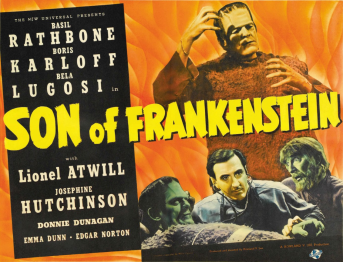
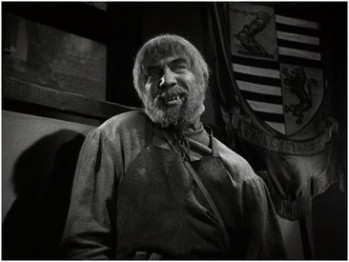
Ygor’s plan is to take revenge on those who sentenced him to death by hanging. As demented as Ygor is, he is not foolish enough to execute his plan without careful planning. He bides his time and finds the perfect tool in the Monster. In one particular scene, inflected with a touch of humour, Ygor fakes a coughing fit in order to spit in the eye of one of his accusers. It is an ominous moment, as he will enact revenge on the same man in a far more horrific way.
It is no wonder that Ygor and the Monster form a connection. Both are outcasts and like the Monster, Ygor has cheated death and hates the people of the village. Lugosi’s hideous smile barely hides his evil intentions, leaving the audience feeling uncomfortable. For all the charges made about Lugosi’s heavy accent and lack of versatility, here he uses his voice exceptionally well. Harsh, gruff and menacing in tone, Lugosi makes Ygor a fuller and meatier villain in great part due to the effective use of his voice.
Son Of Frankenstein is a high point in Lugosi’s career and arguably he would never again have such a strong role in an A-film production. J. Hoberman in the Village Voice makes the valid claim that Lugosi ‘steals the movie in his last really juicy role’.
Dracula (1931) is the film that truly started it all. Not only would it make Lugosi a star but it would also begin the classic horror cycle and take audiences into the world of the supernatural.
Today, Dracula feels dated and even stagey, due to its’ script being based on the stage version, as well as the clunky directing by Tod Browning. The oft-repeated criticism is that it is crying out for a soundtrack and is often stilted. The climax of the film is particularly disappointing and Browning blew a great opportunity for an exciting finish.
The cast has its’ strengths. Edward Van Sloan projects authority and wisdom as the brilliant Dr Van Helsing and I would challenge anyone to find a more disturbing Renfield than the one created here by Dwight Frye, who is exceptional and haunting as the deranged slave to the vampire.
But the true strength of the film is none other than Bela Lugosi. He is supreme with authority as the commanding vampire and uses his gaze to full effect. The supposed weaknesses of his voice are at full advantage when he speaks, with the deliberation and control of one who need not rush for anyone.
The first scenes of the film are amongst its’ best. From the first appearance of Dracula himself in the decrepit bowels of his castle, as he emerges from his coffin along with his vampire wives, the audience is transported into a dark fairy tale where time seems immaterial. When Renfield arrives, he is met by the aristocratic count descending the broken staircase and speaking the cinematically immortal words, ‘I am Dracula…I bid you welcome’. Measuring Renfield carefully like a ‘spider spinning his web for the unwary fly’, Lugosi exudes menace and power as speaks of the ‘children of the night’. Every phrase spoken by Lugosi is just as measured and though he speaks seldom, Lugosi does so with purpose and he is arresting at every word.
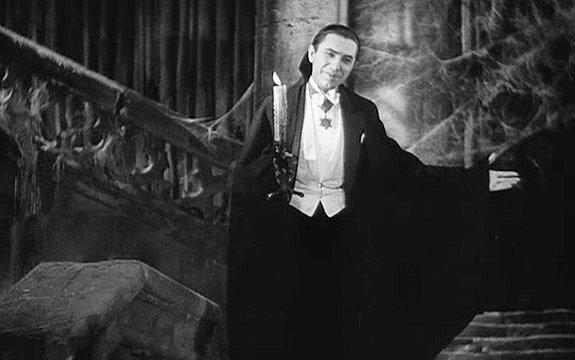
The film starts to slide away when the setting steps into modern London but Lugosi still dominates and his commanding presence is fitting as a count who has lived through the ages. His psychological dual with Van Helsing still impresses and whilst his seduction of his victims is assuaged to some degree, Lugosi still brings controlled energy to each scene.
The love/hate relationship with the character would remain for Lugosi throughout his life. It would typecast him and yet it gave Lugosi his fame. It launched yet also destroy his career, although Lugosi’s choice of roles would certainly play its’ role in impacting on his career.
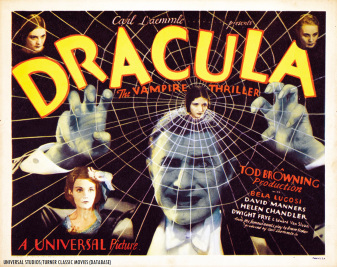
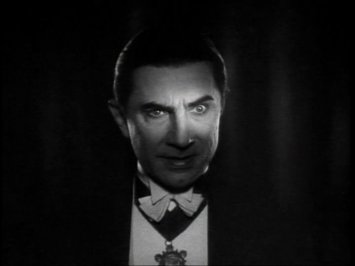
As wonderful as Christopher Lee and others have been in playing the infamous vampire, they are always measured against the still-haunting and mesmerising performance of Bela Lugosi.
There are quite a number of B-films, serials and even worse that Lugosi made for Poverty Row studios and independent producers. Many of them lack the production value that Lugosi was more deserving of and in some cases the films are outright terrible. Yet many of them still entertain and deserve a little more respect than what is often afforded them. In all the productions Bela Lugosi was involved with, he was the consummate professional. Most of all, he was the first true horror star, sparking off the classic horror cycle and remaining long after his passing as the Dark Prince haunting the broken battlements of his castle.
Paul Batters teaches secondary school History in the Illawarra region and also lectures at the University Of Wollongong. In a previous life, he was involved in community radio and independent publications. Looking to a career in writing, Paul also has a passion for film history
Advertisements Share this:
